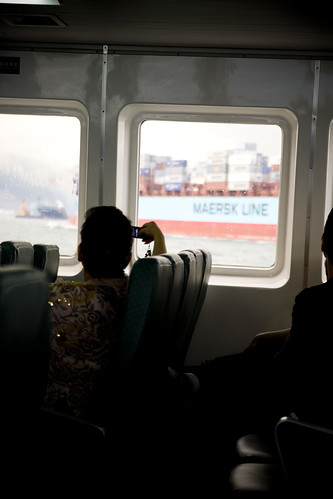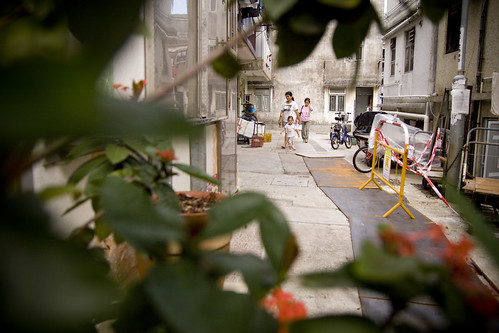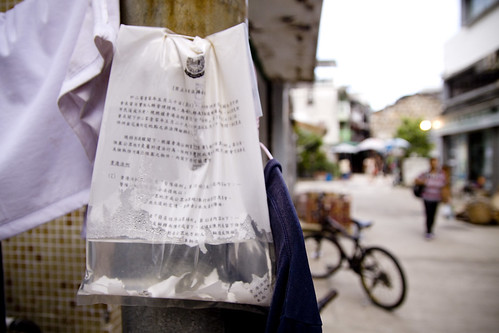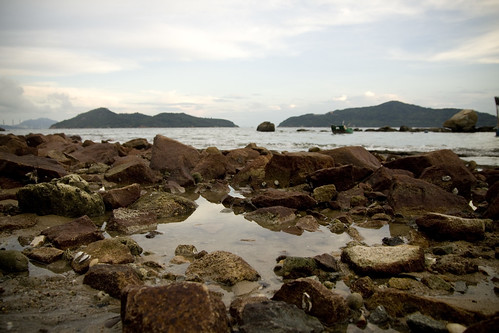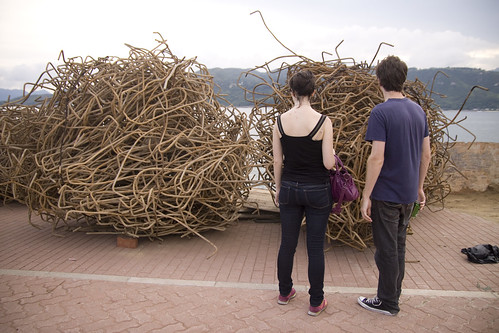Someone said to me once that I should forget about the concept of b-roll. And I really took it to heart.
In visual storytelling we often rely on our radio track to tell our stories. A voice tells us all the facts of the story. The basic print story structure often applies:
We have an anecdotal lede, or in visual language the 'beauty shot,' the most gripping footage, the friggin money shot, whatever you want to call it. Then you launch into a voice over, telling me immediately what's going on and why I should care -- in print lingo a nutgraf. All that nicely done with some b-roll plastered on top of that vaguely illustrates what you're talking about. Then throw in the first quote, like you would in an article. Continue with some context, some transitions, a kicker at the end, ideally another quote and if you don't get that then throw in a nice concluding thought. Voila, you got your general news video, often done within a few hours after an event happened if you've had staffing at the place.
What my colleague though instilled in me though was that visual story arch was just as important. Sequence shots, processes and action shots are imperative in telling a visual story that runs parallel to your radio track (the voices of interviewees, the narrator's voice). It's a visual sense of understanding the processes that constitute the story that you see in every day life: the chronology of going to the beach.
A visual sequence tells this story: First the act of packing a bag to go out, putting the towel in, the sun lotion, the sunglasses. Sitting in a car, driving to the beach, the radio blasting, then getting out of the car. Sitting on the beach, drinking a soda, eating a popsicle. Then the beach emptying at night. That's one continuous story and after the radio track that tells me about the increase in people going to the beach, I've ended up also experiencing a trip to the beach. From beginning to end.
It's easy to forget that part of video. We concentrate on getting all the shots, the signage, the cut away shot of someone's hands, maybe a few atmosphere shots, people walking...and then we forget the bigger picture. The entire story. And true, some stories are more complex. You need to jump from one location and one interviewee to another.
But then there are chapters, each of which can be a little visual story in itself and you can play around with that, play with the rhythm of the video, work in short moments, in which you visually end one chapter and start another. It's time for the radio track to release the visual experience of something and for people to stop glueing some images to words that someone says. I don't like that one dictates the other, and while they are supposed to be interdependent, I figure you should give them a bit more play, too.
I tried to do that in this video:
I think I, like many who started in photography, often looked for a shot that could tell it all. But we're not staring at something for many seconds. Video is linear, continuous and as Walter Benjamin said, it leaves you almost no time to reflect, moments are gone so soon and only the most memorable shots remain. It's not just about stimulating someone.
I understand there's been a renaissance for the photograph, which now often employed in an audio-slideshow gives room to reflect. And that is one way of gripping someone emotionally. But I think there's still the power of visual sequencing and the continuity of video that I'd like to embrace.
In visual storytelling we often rely on our radio track to tell our stories. A voice tells us all the facts of the story. The basic print story structure often applies:
We have an anecdotal lede, or in visual language the 'beauty shot,' the most gripping footage, the friggin money shot, whatever you want to call it. Then you launch into a voice over, telling me immediately what's going on and why I should care -- in print lingo a nutgraf. All that nicely done with some b-roll plastered on top of that vaguely illustrates what you're talking about. Then throw in the first quote, like you would in an article. Continue with some context, some transitions, a kicker at the end, ideally another quote and if you don't get that then throw in a nice concluding thought. Voila, you got your general news video, often done within a few hours after an event happened if you've had staffing at the place.
What my colleague though instilled in me though was that visual story arch was just as important. Sequence shots, processes and action shots are imperative in telling a visual story that runs parallel to your radio track (the voices of interviewees, the narrator's voice). It's a visual sense of understanding the processes that constitute the story that you see in every day life: the chronology of going to the beach.
A visual sequence tells this story: First the act of packing a bag to go out, putting the towel in, the sun lotion, the sunglasses. Sitting in a car, driving to the beach, the radio blasting, then getting out of the car. Sitting on the beach, drinking a soda, eating a popsicle. Then the beach emptying at night. That's one continuous story and after the radio track that tells me about the increase in people going to the beach, I've ended up also experiencing a trip to the beach. From beginning to end.
It's easy to forget that part of video. We concentrate on getting all the shots, the signage, the cut away shot of someone's hands, maybe a few atmosphere shots, people walking...and then we forget the bigger picture. The entire story. And true, some stories are more complex. You need to jump from one location and one interviewee to another.
But then there are chapters, each of which can be a little visual story in itself and you can play around with that, play with the rhythm of the video, work in short moments, in which you visually end one chapter and start another. It's time for the radio track to release the visual experience of something and for people to stop glueing some images to words that someone says. I don't like that one dictates the other, and while they are supposed to be interdependent, I figure you should give them a bit more play, too.
I tried to do that in this video:
I think I, like many who started in photography, often looked for a shot that could tell it all. But we're not staring at something for many seconds. Video is linear, continuous and as Walter Benjamin said, it leaves you almost no time to reflect, moments are gone so soon and only the most memorable shots remain. It's not just about stimulating someone.
I understand there's been a renaissance for the photograph, which now often employed in an audio-slideshow gives room to reflect. And that is one way of gripping someone emotionally. But I think there's still the power of visual sequencing and the continuity of video that I'd like to embrace.

